+
An alarm system for maximum effectiveness at reasonable cost must be designed as carefully as a MATV or sound system. John Sanger is well qualified to explain system design, operating a company that both sells and installs systems and sell equipment to and advises do-it yourselfers. This is the first of several articles on system design and bidding.
by John Sanger
Designing an alarm system need not be a traumatic experience. A basic knowledge of equipment and sources of supply will minimize design problems. Before a decision can be made about what equipment will be used, it should be determined where it will be used. And, before that determination can be made, there should be a fundamental understanding of the three major components in an alarm system: a detection device, a processing (control) unit, and an annunciator.
A detection device does just what the name implies, it detects something: a door opening, glass breaking, vibration, pressure, movement, sound, or temperature -to name a few. The selection of the correct detection device is crucial to the proper operation of the system.
False alarms that require repeated service calls can quickly erode the profit made on the alarm sale. The rationale for selecting certain devices for specific applications will become apparent when individual detectors are discussed later.
The processing unit, commonly referred to as a control box, is the electronic or electro-mechanical brain of the system. Sophisticated electronic control devices developed over the past ten years have been a boon to the alarm industry. They are easier to install and perform a wider variety of functions at a cost-effective price. The purpose of the processing unit is to receive a signal from a detector and respond. The selection of the proper control unit will depend on two things: (1) the number and types of detectors used, and (2) the functions required of the system by the customer.
The processed alarm signal from the control device is sent to an annunciator. The signal can be announced visually, audibly, or both.
Bells and sirens are the most common forms of annunciation, although strobe lights are gaining popularity.
Annunciation may take the form of a pre-recorded message played on a telephone tape dialer or an electronic signal sent to a monitoring center.

Fig. 1. The floor plan of a house showing a typical residential security installation.
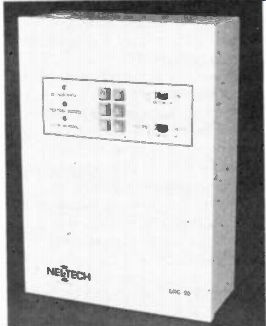
Fig. 2 Nel-Tech's LKC-50 control has a wide variety of functions. It is useful
in many residential systems and some commercial systems. It provides good protection
at an affordable price.
The Building Survey
The first step in designing a system is to survey the building to be protected.
While walking through, and around, the building, careful and detailed notes should be made. Diagrams of the building and/or individual rooms will prove helpful when the designer begins planning a proposed system.
Answering the following questions will provide the system designer with enough information to design an efficient and economical system for the customer and a profitable one for the installer. The comments noted in parentheses following the questions indicate the rationale behind the questions.
1. How many doors -interior and exterior? Type/construction? Location? (General information to determine best detection devices.)
2. How many windows? Type/ construction? Location: (General information.)
3. Is there enough room in the attic or above the suspended ceiling to work? (If not, wireless RF equipment may have to be used for part of the system.)
4. What type of roof? Hip? Gable? Location and type of vents? (Gable ends with vents are ideal for mounting siren speakers. Soffit vents can be used for speakers if the vents are accessible.)
5. What is the interior and exterior wall construction? Hollow? Solid? (Space protection devices should be mounted on vibration free walls.
Hollow walls can be used for concealing wire.)
6. Where will the control box be located? Is ac power convenient? (Helps to plan wire runs to detectors, annunciators, and power supply.)
7. Will fluorescent lights be on when the alarm is in use? (Fluorescent lights may affect microwave units.)
8. Is there a remote controlled television? (Ultrasonic units may affect the operation of the television.)
9. Will pets-or anything else that moves -be left in the building when the alarm is on? (Motion detectors detect movement-regardless of what moved. Passive infrared detectors sense heat changes, and animals give off body heat.)
10. Does the customer want to use the alarm when at home? Away from home? Both? (In other words, should an interior zone be used to shunt some detectors while leaving perimeter detectors on?)
11. Does the temperature in the building drop below 40 degrees Fahrenheit or exceed 120 degrees Fahrenheit under normal circumstances? (Extreme temperatures, especially for prolonged periods, may affect batteries and/or other items of equipment.)
12. Are neighbors close enough to hear a bell or siren? (If not, should a tape or digital dialer be used to notify the authorities?)
13. Would a strobe light be visible to neighbors or a passing patrol car? (Strobes help pinpoint the location of the alarm, especially at night.)
14. Can the system be expanded without major modification or replacing the control unit? (Keep in mind the potential for future sales: heat and smoke detectors for a fire system, or adding extra zones, or connecting an automatic dialer.)
What Sensors to Use? The second step in designing the system is determining what will be protected and the specific detection devices needed. Doors are an obvious choice for protection since approximately eighty percent of all burglaries occur through a door, with over fifty percent occurring through a front door.
A basic perimeter alarm system should include all exterior doors. The doors are easily protected by using magnetic contact switches. Moreover, recessed magnetic contact switches remove the possibility of defeating the system by tampering, and, since they are totally concealed, they do not detract from the room's decor.
Protecting windows is a debatable issue--one that each installer must resolve for himself. There are positive aspects to each argument. Protecting each window with foil tape or glass breakage detectors (not vibration contacts) assures that entry will be detected immediately. Foiling windows is a time consuming process and can quickly increase the price of a system due to the labor involved. The foil tape is inexpensive, the labor is not. Glass breakage detectors have limitations if the window consists of several small panes. Aesthetics come into play as well. The customer might object to the appearance of the foil tape.
If an intruder gains access through an unprotected window, he will most likely leave through a door-especially if he is carrying a large or heavy object. In that case, he would be detected leaving instead of entering, minimizing the loss, but not preventing it. An alternative to protecting each window is to make an interior (trap) zone. The installation of concealed magnetic contact switches on one or more interior doors, or the use of a space protection device covering an area where an intruder is likely to pass, in lieu of protecting each window, will reduce the time required to install the system and, therefore, reduce the cost of the system to the customer. Once inside, it is likely that an intruder will enter several rooms, and, upon opening a protected door or moving into an area covered by a space protection device, he will activate the system. Master bedroom and walk-in closet doors are excellent choices for interior trap zones using magnetic contact switches; central hallways, for space protection devices.
Installation of recessed magnetic contact switches is a relatively simple procedure when using a 1/4 x 30" drill bit and drilling straight up into the attic. If, however, space protection devices are to be used, care must be exercised in the selection and placement of such devices.
Ultrasonic motion detectors have a range of approximately 25 x 20 feet, depending on the temperature, humidity, shape of the room, and objects in the room. They are susceptible to air currents (from heaters and air conditioners) and certain high frequency noises (such as ringing telephones and hissing radiators). Microwave units are available in many different ranges, up to 300 feet.
For most applications, a range of seventy-five feet or less is adequate.
Placement of the unit is critical since its waves will penetrate most nonmetallic materials. Therefore, a unit aimed at a window or thin wall will "see" movement on the other side.
Microwaves, for the most part, tend to be more stable than ultrasonics and are not affected as much by temperature changes and air currents.
They may, however, "see" fluorescent lights. Strict adherence to the manufacturer's instructions will eliminate most placement problems.
Passive infrared (PIR) detection devices are gaining in popularity with many alarm installers. They detect rapid changes in temperature within the protective zones-of which there are several. The unit will detect the infrared radiation (body heat) of an intruder the instant he enters the protection pattern. Again, careful placement is required. Avoid placing the unit where it will be exposed to direct infrared radiation-sunlight and car headlights are two common sources. Incandescent bulbs are a potential problem. For example, if a table lamp, controlled by a timer, is in view of the PIR device, as soon as the light bulb turns on and heats up, the PIR will sense the change in temperature and cause an alarm.
There are many different types of detectors available; too many to enumerate in this article. Reading the "Security Products" section and contacting the manufacturers of security products who advertise in ET/D will provide the installer with invaluable product information.
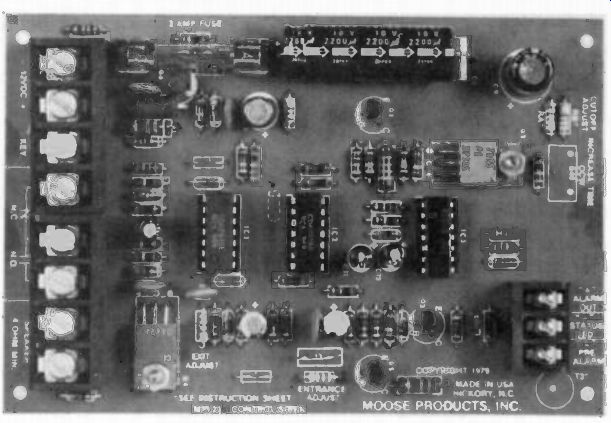
Fig. 3 There are some instances when a system, especially the control, seems
to require building from scratch. The Moose MPI-23 control (PC board) had numerous
features that will allow the system designer to actually construct his own
control box without it becoming expensive.
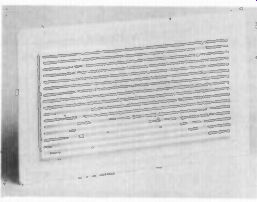
Fig. 4 Moose Products MPI-16 speaker adds a nice (and professional) touch
to an installation. The attractive 15 watt speaker can be used without detracting
from the decor of a home or office and can be surface or flush mounted.
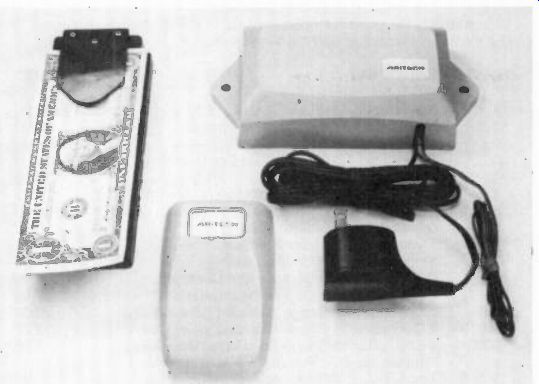
Fig. 5 Utilization of wireless equipment makes some installations less difficult.
A cash drawer transmitter, portable transmitter, and single channel receiver
(left to right) used in conjunction with a tape or digital dialer would make
an effective silent hold-up alarm.
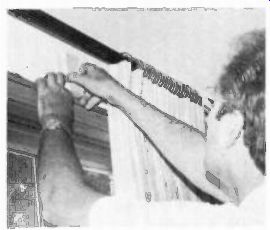
Fig. 6 Wireless transmitters can be installed in a matter of minutes-greatly
reducing the installation time required. Although equipment costs will be greater
when using wireless equipment, the savings in labor will more than make up
for the higher costs.
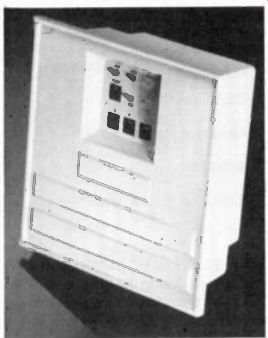
Fig. 7 Solfan's Model 1200 control unit contains features that make it very
cost effective for residential alarm systems.
Ease of installation and simplicity of use are key features.
The Control Unit
The third step in designing an alarm system is the selection of a control unit, one that will accept the detectors in the system and meet the requirements of the customer. There are many excellent controls on the market. We, at Sanger and Son Incorporated's Security Division, have found that four control units will fulfill the needs of ninety percent of our installations.
Our most popular control is Solfan's Model 1200. It has an entry/exit delay, built-in siren driver, automatic cut-off and re-arm, and comes with a rechargeable gel cell. The 1200 will accept two "slave" microwaves (which are less expensive than stand-alone units) and has a normally closed delay circuit, a normally open instant circuit, and a normally open twenty-four hour panic circuit. The siren driver is capable of powering two thirty-watt speakers and the unit has normally open and normally closed dry contacts (to use for auxiliary annunciation devices such as telephone dialers and strobe lights). The control is housed in an attractive plastic cabinet which may be surface or flush mounted. Arming and disarming the system is accomplished by entering a code on the digital keypad.
Another popular control is Nel Tech's LKC-50, which has a built-in digital keypad for arming and disarming plus slide switches to select an instant or delay mode and to control an interior zone. Additional digital remote stations may be added to the system. A combination of normally open and normally closed burglary and fire/panic circuits are standard features. It has a charging circuit to allow the use of a rechargeable gel cell. In alarm, the unit provides voltage output for a siren driver or strobe light. Also, the LKC-50 has adjustable timing circuits for entry and exit delays and alarm cut-off.
PLC's 515 series of controls are designed to use two-wire remote key stations instead of the usual four-wire stations-making installation simpler.
Two separate burglary zones plus fire and panic circuits make the 515 series very versatile. Separate voltage outputs for burglary and fire/panic and constant 6vdc and 12vdc outputs are provided.
Moose Products' MPI-23 control is a printed circuit board that does not come in an enclosure, allowing the installer to literally build his own control box. It is 12vdc powered and accepts both normally open and normally closed devices. The MPI-23 is armed and disarmed via a two position (on/off) maintained switch. Its built-in siren driver and timing circuits make it adaptable to numerous installations.
In addition to the four primary controls listed above, two new controls are available from Moose Products: the MPI-330 and MPI-335.
Both new controls show a lot of promise because of size (they fit a double-gang electrical box), appearance (attractive face plate), and operation (a variety of functions). The system designer should determine what features are standard and which ones will have to be added to the control unit he is considering.
Siren drivers, cut-off timers, and standby power supplies (batteries) are the most common items added to a control.
The Alarm
The fourth step in the design process is determining what the system will do once in an alarm condition-that is, after it has been "tripped." A local alarm is one that just makes noise.
But, what kind of noise? A bell? A siren?

Fig. 8 The addition of a "panic button" to an alarm system will
make the system more versatile, and, may help close the sale. The convenience
of a portable panic button, such as Transcience's PT-1, is a good setting feature--especially
to women.
To my way of thinking, bells are less desirable than sirens. Sirens get attention. A good siren driver, powered by twelve volts or more, connected to a thirty-watt speaker can be ear-splitting. Besides, speakers are usually easier to install and require less maintenance than bells, especially if the speaker can be mounted inside an attic vent.
As long as we are making noise outside the building why not make noise inside the building? After all, we want the intruder to be fully aware of the fact that he has been detected.
Keep in mind that the primary function of an alarm is to make noise and, in so doing, cause the intruder to flee--hopefully, empty-handed. The Moose MPI-16, a speaker of 15 watts, has an excellent application as an interior siren speaker. It can be flush or surface mounted, it comes in walnut brown or ivory white, and, best of all, it does not look like a speaker. Once in place, it appears to be an air vent.
Other annunciators include strobe lights as well as tape and digital telephone dialers, which are frequently used in conjunction with bells or sirens. An alarm system that relies solely on a tape or digital dialer (a "silent" alarm) has one potentially serious problem: it assumes that there will be an immediate response to the alarm by the police or other persons--which may not be a valid assumption. If in doubt, make noise.
Specifying and Purchasing
The final step is to order the equipment needed for the installation.
There are hundreds of security and fire equipment manufacturers and distributors across the country.
Generally, it is advisable for a small dealer/installer to utilize the services of a distributor. Having a wide variety of products in stock, the distributor can be a valuable asset to the alarm installer by assisting him in selecting the proper equipment for a particular job. Locating several dependable distributors who offer good service and competitive prices can alleviate many of the problems associated with equipment purchases.
Equipment manufacturers are an asset to the installer as well. Their technical staffs will assist the installer in solving unusual problems, and most have toll free telephone numbers.
Some security consultants will provide specialized services to small alarm dealers/installers. Although there is a stipend for the consultant's services, he will probably save money for the dealer in the long run. As a regular matter of business, the consultant is aware of technological changes in the industry; he knows products and applications as well as sources of supply. Services and fees will vary from consultant to consultant and it would be wise to locate one who specializes in systems design.
----------------------------
This chart lists the equipment necessary to install the proposed system and the costs associated with the installation.
QUANTITY EQUIPMENT COST
1 Nel-Tech LKC-50 Control Unit 1 Nel-Tech 6R3 Digital Remote Station 1 Basler 12vac Transformer 1 Powersonic 12vdc-1.5ah Gel Cell Battery 1 Adcor SD-1 Siren Driver 1 Solfan 3250 Microwave with RP-70 Antenna 6 Sentrol 1078 Recessed Magnetic Contact Switch 1 Moose MPI-30 Exterior Speaker 1 Moose MPI-16 Interior Speaker 1 Smokeguard B1R Smoke Detector 2 Fire-Lite 41 - 130 Degree Heat Detector 3 Fire-Lite 42 - 200 Degree Heat Detector 1000' 2 Conductor/22 Gauge Stranded Wire, Clear 250' 2 Conductor/18 Gauge Stranded Wire, Clear 50' 4 Conductor/22 Gauge Solid Wire, Gray Jacket 1 Transience PT-I Portable Panic Transmitter 1 Transience SCR-12 Receiver
$100.00 20.00 5.00 19.00 10.00 125.00 21.00 30.00 12.50 24.00 5.00 7.50 20.00 12.75 5.00 19.50 37.00
Equipment Cost
Miscellaneous Hardware (3%) Total Equipment Cost Estimated Labor Cost (14 Manhours @ $15.00/hour)
Total System Cost Add Profit Margin (30%)
$473.25 14.20
$487.45
$210.00
$697.45
$209.24
Retail Price to Customer
*Sales tax not included.
906.69*
-------------------------------
A Typical System
The floor plan shows a typical three bedroom house with a two-car garage.
There are three solid exterior doors (ED-1, ED-2, and ED-3). Although door ED-3 is inside the garage, it should be considered as part of the perimeter of the building. Also on the exterior of the house are an overhead garage door (GD-1) and a sliding glass door (SD-1). The perimeter of the building contains sixteen vertical sliding windows (WN-1 to WN-16) and one stationary window (WN-17). The proposed intrusion alarm system should include recessed magnetic contact switches on all exterior doors (ED-1, ED-2, ED-3 and SD-1), except the overhead garage door (GD-1), in the perimeter zone.
The interior trap zone should include recessed magnetic contact switches on two interior doors (ID-1 and ID-2) and a microwave intrusion detector located in the dining area. For this particular system, the windows will not be protected. Should an intruder gain access through a window, he will probably be detected by one of the two protected interior doors or by the space protection device-which covers the living and dining areas and parts of the kitchen and hallway.
For the purpose of illustration, let us assume the use of a Nel-Tech LKC-50 control panel. The system can be armed or disarmed from the digital keypad on the control box or from the remote keypad located in the entry hall. An adjustable entry/exit delay circuit allows all of the alarm's functions to be controlled from inside the house. (The specific functions of the LKC-50 were noted earlier.) An exterior speaker should be mounted so that it will be heard by the greatest number of people. In this case it is mounted in the front of the house, preferably inside a gable vent.
The interior speaker should be mounted in a central location inside the house.
Adding a fire alarm system to the
intrusion system is a relatively simple matter. One smoke detector located in the hallway and five heat detectors (garage, kitchen, utility room and heater closet) will provide good protection.
The inclusion of a wireless panic system adds the final touch to the overall protection system. A portable RF transmitter and receiver connected to the twenty-four hour fire/panic circuit in the LKC-50 control are all that are required for the panic system.
The system just described is not what one would consider elaborate; it is a typical residential system.
Numerous items of equipment could be added to effect a higher level of security. For example, the windows could be protected with foil tape or glass breakage detectors or a telephone tape dialer could be added.
The cost to the customer for protecting all of the windows would be between $250.00 and $350,00; adding a telephone tape dialer would be an additional $200.00. The system price to the customer assumes that the system will be sold to the customer. Should the dealer decide to lease the system, he must decide how much to charge for installation and how much the monthly lease fee will be. In general, it is better for small dealers to sell systems. There are ways to be competitive with the large alarm companies on a leasing and monitoring basis. However, space does not permit a complete discussion of the potential--both good and bad for entering the lease/monitor market.
LTD The Nosnicks were married at the Castle Hill Home for the retarded.
President's Committee on Employment of the Handicapped Washington, D.C. 20210
(source: Electronic Technician/Dealer)
Also see: An Intrusion and Fire Alarm System---Another Design Problem